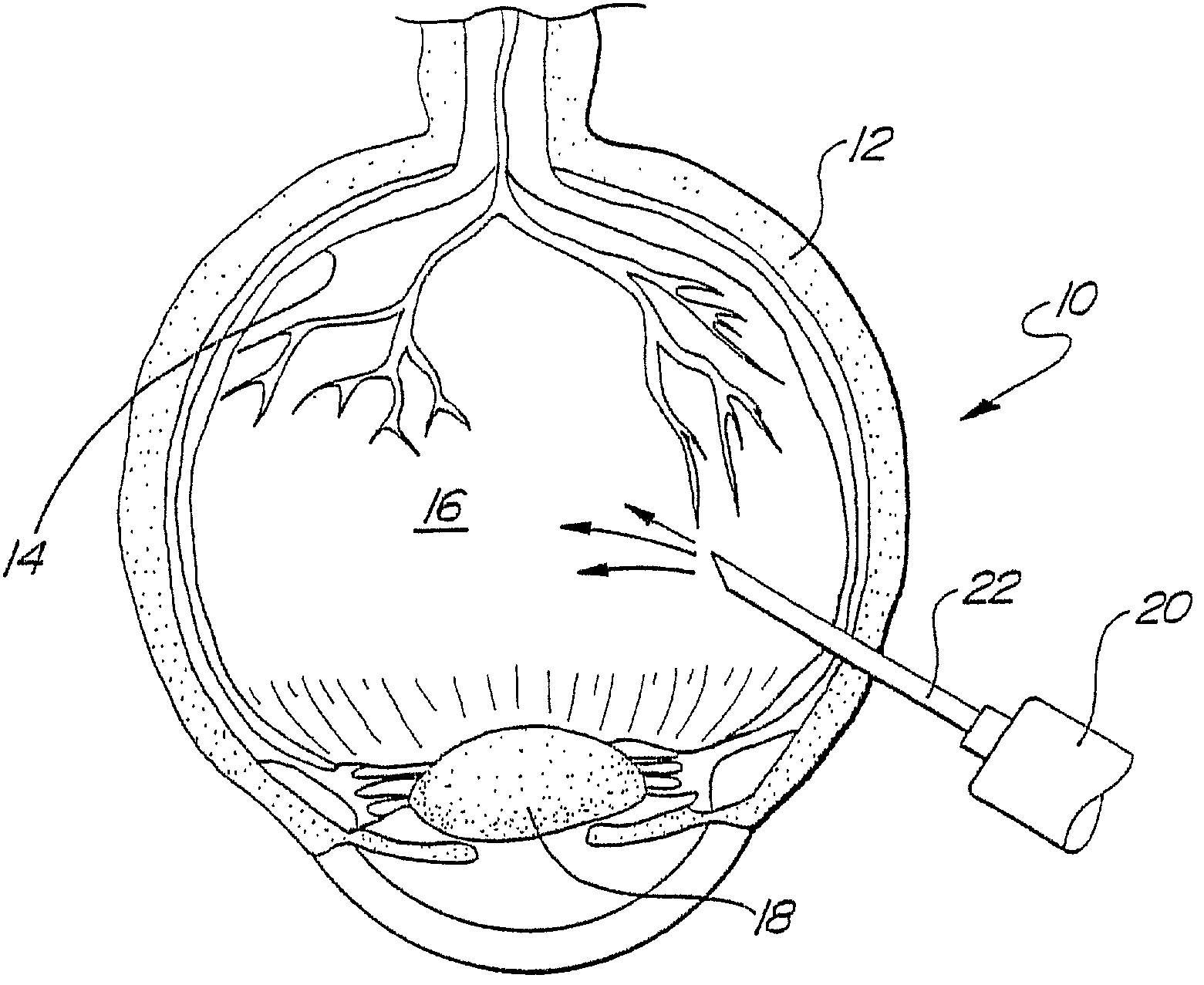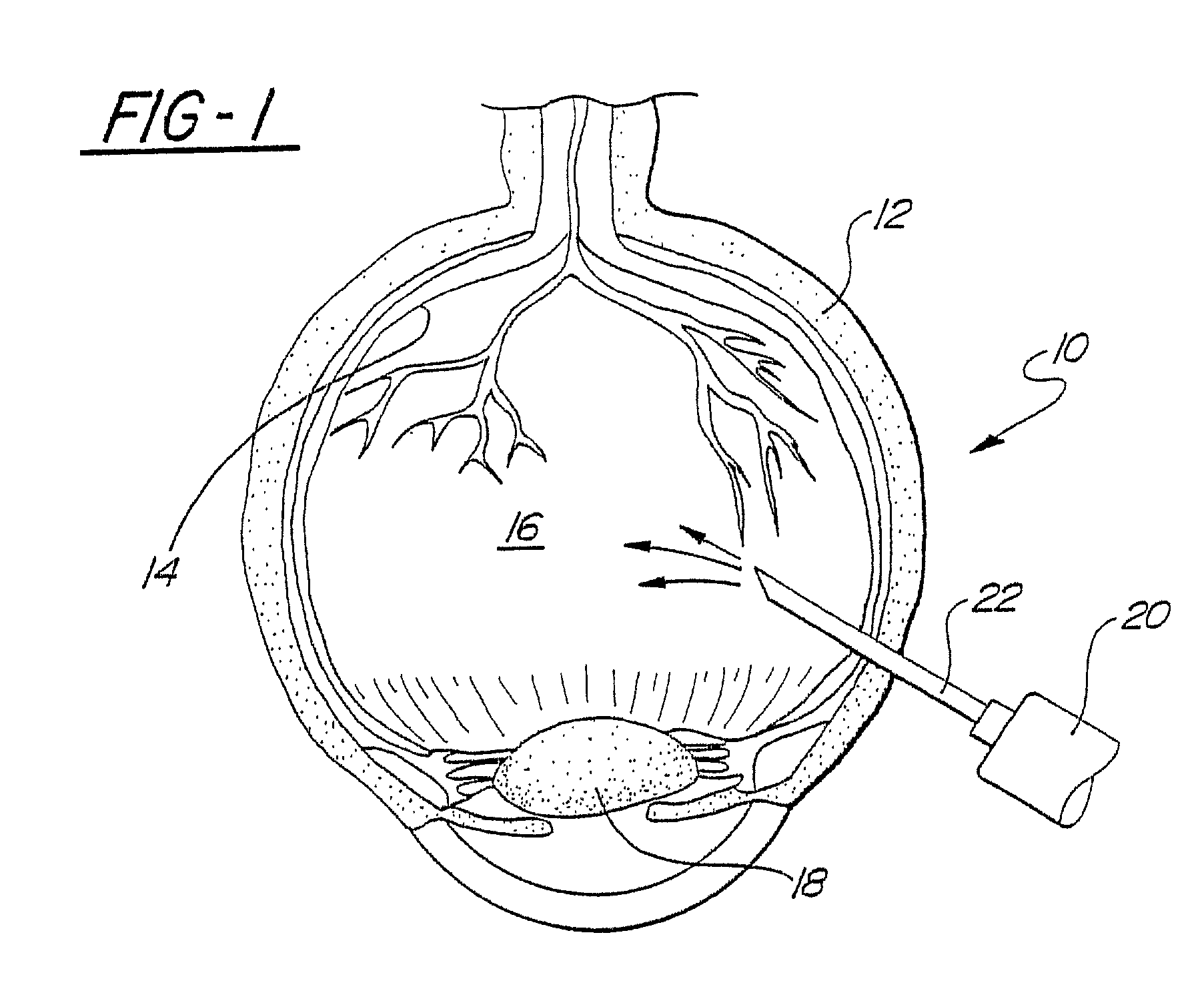Method for vitreous liquefaction
a vitreous liquefaction and vitreous liquefaction technology, applied in the field of vitreous liquefaction, can solve the problems of tearing or other retinal damage, difficult removal, and traction on the retina
- Summary
- Abstract
- Description
- Claims
- Application Information
AI Technical Summary
Problems solved by technology
Method used
Image
Examples
example 1
Preparation of Human Plasmin
[0018]Autologous human plasmin is isolated by drawing patient blood before surgery and isolating plasminogen from the human plasma by affinity chromatography on a lysine-Sepharose column (Sigma Chemical). After elution of the plasminogen from the column by 15 mM aminocaproic acid (Amicar, American Reagent Laboratories), the plasminogen is dialyzed for three hours, or overnight, against 100 mM NaCl, 100 mM d-mannitol, 20 mM Na2HPO4, pH 7.5 to remove the aminocaproic acid. The plasminogen is concentrated to a volume of 0.6 ml, 50,000 IU of streptokinase (Streptase, Astra) added and the mixture is incubated at 37° C. for ten minutes. Plasmin activity is determined spectrophotometrically by measuring the cleavage of a synthetic substrate (D-val-leu-lys-p-nitroanilide hydrochloride, Sigma Chemical) which gives an absorbance at 405 nm. Plasmin is stored at 4° C. or −70° C. until used.
example 2
In Vivo Use
[0019]A patient is prepared for vitrectomy as is standard. Ten minutes prior to surgical incision, 0.8 IU autologous plasmin in a volume of 0.1 cc is injected into the mid vitreous using a 30 ga needle and tuberculin syringe. Optionally, prior to injection, a paracentesis is performed to prevent an increase in intraocular pressure. The eye is entered using an infusion / fiber optic light source and the state of vitreous liquefaction determined by assessing schlieren line presence. Suction is used to remove vitreous through a narrow gauge instrument.
PUM
| Property | Measurement | Unit |
|---|---|---|
| Time | aaaaa | aaaaa |
| Volume | aaaaa | aaaaa |
Abstract
Description
Claims
Application Information
 Login to View More
Login to View More - R&D
- Intellectual Property
- Life Sciences
- Materials
- Tech Scout
- Unparalleled Data Quality
- Higher Quality Content
- 60% Fewer Hallucinations
Browse by: Latest US Patents, China's latest patents, Technical Efficacy Thesaurus, Application Domain, Technology Topic, Popular Technical Reports.
© 2025 PatSnap. All rights reserved.Legal|Privacy policy|Modern Slavery Act Transparency Statement|Sitemap|About US| Contact US: help@patsnap.com


